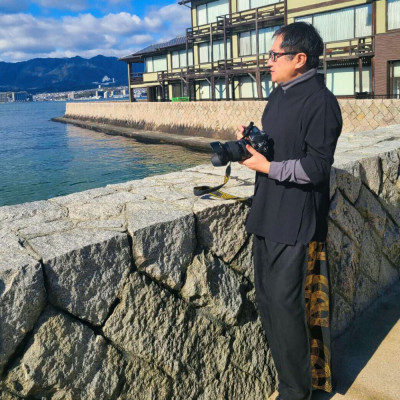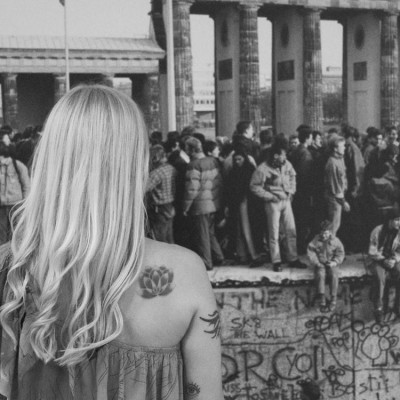 Canon 5D Mark II . Canon 24-105mm f/4L . f/13
Canon 5D Mark II . Canon 24-105mm f/4L . f/13
I have a small room (about eight square meters) in my home that I have dedicated to indoor photography. I built a shooting table with a frame that consists of two aluminum cubes so I can easily attach my flashes and plastic background using a few clamps.
Every time I plan a photo session in my little home studio, I first have to think of an idea. Very often I find my inspiration in my immediate surroundings, and that was the case when I took this image. On a windowsill I spotted my wife's beautiful calla lily growing in a flowerpot. It was a big plant with about ten blooms, and I thought she wouldn't notice that a few of them were missing. (That turned out to be a mistake later on.)
"Eventually I decided to tilt the vase so that in the final image it would appear as though the yellow liquid ran up the stem, through the bloom and dripped onto the table."
Simply putting the flower into a bud vase did not satisfy me. I needed to create a more unique concept, and finally I came up with the idea to use colored water. Once I visualize my concept, I draw some simple sketches either on paper or on my tablet PC. It helps me to further develop the idea. Eventually I decided to tilt the vase so that in the final image it would appear as though the yellow liquid ran up the stem, through the bloom and dripped onto the table.For the seamless background I used a piece of white plastic. The flash was clamped to the aluminum set above the flower and equipped with a diffuser to soften the light when the flash fired. I attached one end of fishing line to the rim of the vase with a drop of Super Glue and clamped the other end to a stick that I laid across the top of the set.
"I had to take a few shots to get my timing down; just before the drop fell, I had to release the shutter."
Next, using a pipette I filled the vase with yellow watercolor paint and carefully put the calla into the vase. When everything was ready and the camera was mounted on the tripod and in position, I took a few test shots until the sharpness and the exposure were right. The last step in preparation was to create the drip, so I filled a cup with more paint, held the cup beneath the flower, carefully lifted it up until the tip of the calla dipped into the paint, and then slowly removed the cup. Using a small pipette full of paint, I then placed a drop on the flower and let it run down toward the tip. I had to take a few shots to get my timing down; just before the drop fell, I had to release the shutter. After taking a few frames, the puddle on the tabletop became too big, so I had to clean it up and try again. But I got the image I wanted without having to make too many attempts.
The image was processed in Photoshop. Because I was satisfied with exposure and composition before I took the pictures, I had very minimal processing to do.1) With the help of the histogram, I increased the contrast enough to turn the background to a bright white, making sure to not clip the highlights. I also had to make sure the shadows did not become too dark; I wanted the overall image to be light and airy and overpowering, heavy shadows would ruin the effect.2) I used the Clone Stamp tool to remove a few specks of dust on the white surface and the vase. I also easily removed the fishing line.3) I boosted the Saturation a bit until I was happy with the final result.
1) Use high quality glass, if possible. You will get much better results. It's clearer, sharper and has fewer inclusions.
2) When you have finished setting up, be very careful to not hit the table or produce vibrations of any kind. This setup is very sensitive. If the paint in the vase moves, for instance, it will create a messy smudge on the glass and destroy the crispness of the paint's surface.
3) Use a very thick paint with a consistency similar to honey. Not only will it produce a finer drop on the tip of the flower, but it will also drip slower, allowing you more time to accurately release the shutter at the precise moment.
I was born in Graz, Austria, in July 1964. My first contact with photography was when I turned 18. Ever since then I have been fascinated by this subject, and ten years later it became my one and only passion. I started with landscape and macro photography, but I later became very interested in tabletop, still life and high-speed photography. I love to take complete control of the light when using flash. These days I seem to gravitate toward minimalism; I try to reduce things around me to their bare essentials and show only the lines and surfaces that make up the object. Photography is a fascinating, endless journey.

















